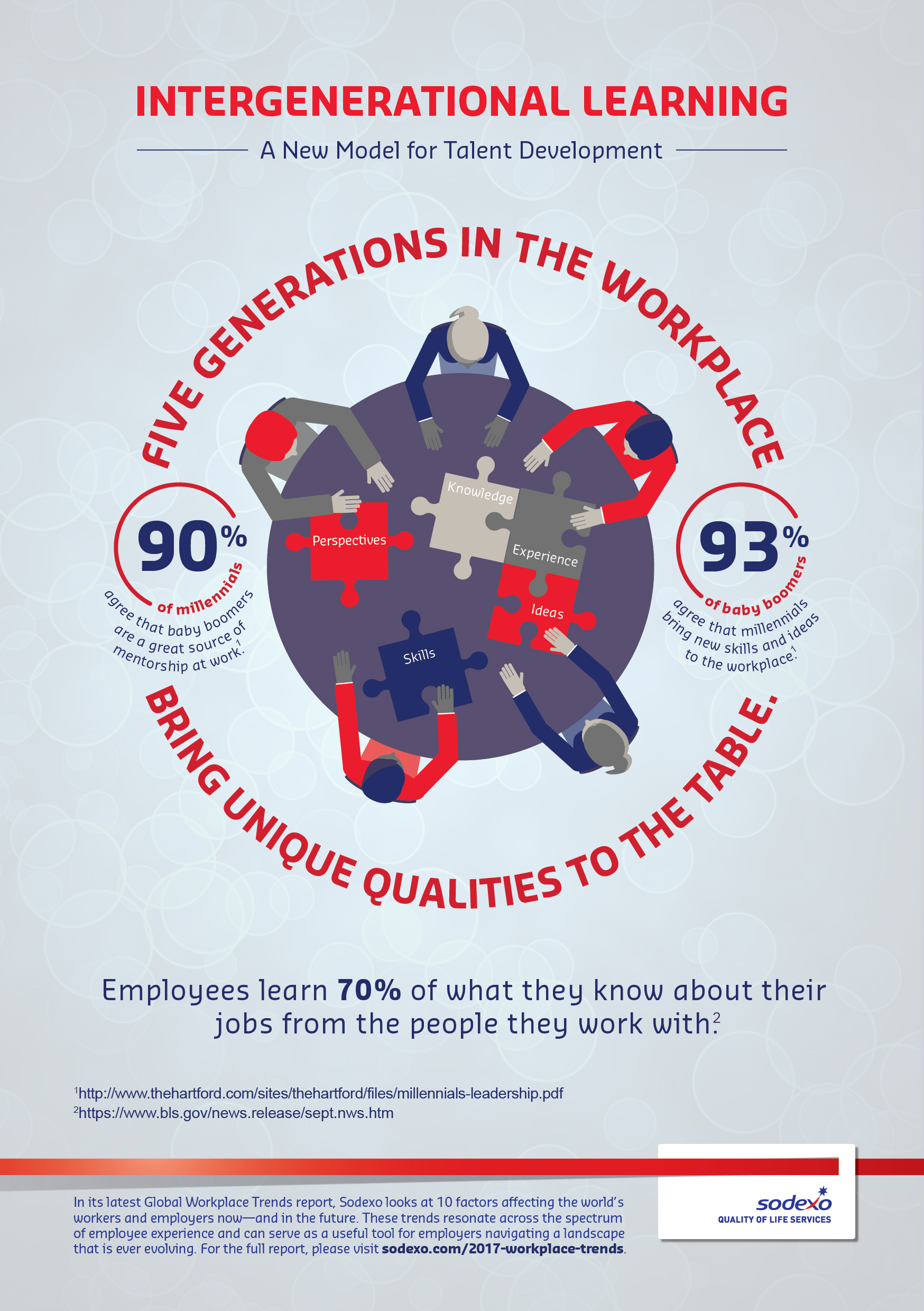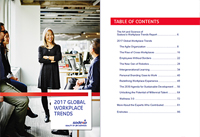Intergenerational learning
A new model for talent development
NOW
The norms of work-related learning challenge the wisdom that older people teach while younger people learn — with a workforce that is working for more years, this is no longer the standard. Now, workers of all ages contribute to one another, establishing longer and more dynamic careers that defy generational stereotypes and spell the end of the top-down mentoring model.
NEXT
By 2030, the percentage of the population aged 60 and over is expected to leap, from 12.3% in 2015 to 16.5%. Intergenerational agility is a critical piece of the employee value proposition, and competitive companies will increasingly focus on successfully developing and managing a multigenerational workforce. Organizations will quickly see the benefits of intergenerational learning, including greater efficiency, greater productivity and a more competitive standing.
To go further
About the 2017 Global Workplace Trends
Every year, Sodexo looks at the main factors affecting the world’s workers and employers now — and in the future. These trends resonate across the spectrum of employee experience and can serve as a useful tool for employers navigating a landscape that is ever evolving.













